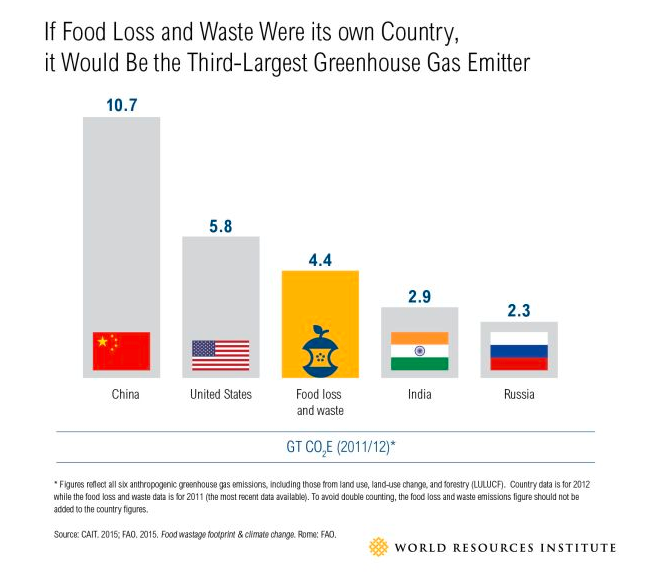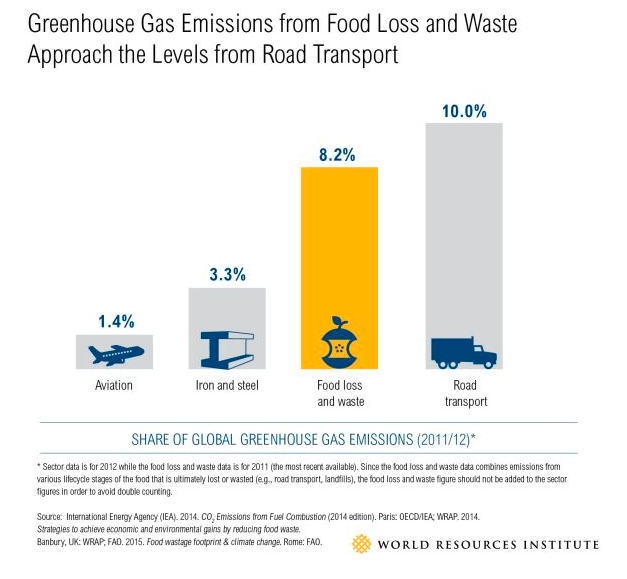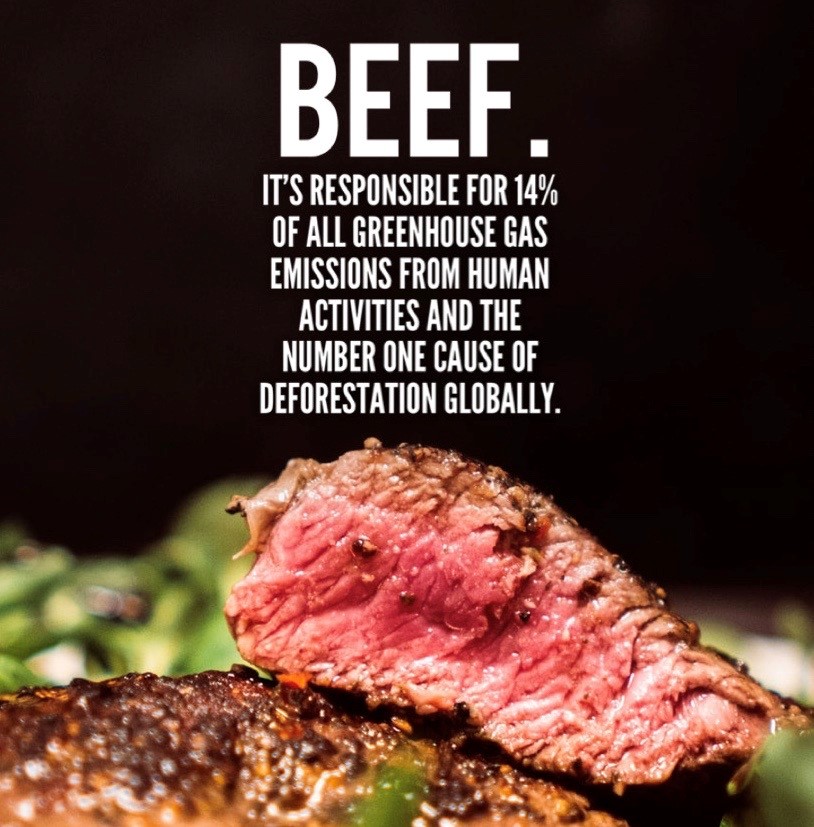WHY WASTING FOOD IS EVEN WORSE THAN YOU THINK
Like most people, I always feel a little guilty when I discover moldy produce in my fridge, or have to throw away forgotten leftovers. And then there’s that same cycle of thoughts that always follows: “What a waste of food!” “What a waste of money!” “There are millions of people who are starving!” All valid points.
But now I’ve discovered a new reason to feel bad about wasting food (you’re welcome!): it’s contributing to global warming and climate change—in a huge way. Apparently, all our wasted food emits 4.4 metric gigatons of greenhouse gas per year, which represents 8-10% of total anthropogenic (i.e., man-made) emissions.
To understand just how gigantic that number is, a few graphics are helpful. The World Resources Institute has one that pretty effectively illustrates the enormity of the problem:

That’s right: if “food loss and waste” were its own country, it would be the world’s third largest greenhouse gas emitter—surpassed only by China and the US.
Here’s another staggering statistic that puts this issue in perspective: food loss and waste generates more than five times as much annual greenhouse gas emissions as aviation, and is approaching the level of emissions from all road transport around the world.

Where do all these greenhouse gas emissions come from? First, there are the emissions associated with the production, processing, transport, and distribution of the wasted food. Then there are the emissions associated with destroying our carbon-absorbing forests to convert land to produce the wasted food. And then there are the emissions associated with the wasted food decaying in a landfill and releasing methane, a greenhouse gas that is at least 28 times more potent than carbon dioxide.
All of these emissions add up because we waste a LOT of food. Apparently, a third of all food produced for human consumption is lost or wasted. That’s 1.3 metric gigatons of food worth approximately $940 billion that is lost or wasted. In the US, even more food is wasted—about 40% of all food produced. These numbers literally made my jaw drop.
Not all food waste is created by consumers like you and me. In fact, globally, roughly half of all waste is created before the food even leaves the farm. But in developed countries, much more food waste happens at the retail and consumer level. One analysis found that in the US, nearly 85% of food waste occurs in stores, restaurants, and homes. While shocking, this is good news, because it means that we consumers can do a lot to fix this problem.
What can you do to help? Well, of course: waste less food. None of us intends to waste food, and it can be hard to fix a problem that occurs as the result of a mistake. But there are things we can do to reduce the chances that we make that mistake. I’ve found that the solution is to inject a little more planning, organization, and creativity into the way I use and consume food.
Here are some tips that have helped me reduce my carbon footprint from food waste:
Buy only what you need (and figure out what that is first). Particularly when it comes to foods that must be refrigerated, try not to buy more than you’ll definitely use. I routinely have to resist the temptation to take advantage of a produce sale if I’m not sure I’ll be able to eat it all before it spoils.
How do you know what you’ll definitely use? Put a little thought into it beforehand. I don’t full-out meal plan, but I do think about how many meals I’ll need to prepare before I shop next, whether I’ll be going out for meals, and what stuff might come in handy for the number and type of meals I’ll need to prepare. I also check my fridge and pantry before I go shopping to have a better understanding of what I need.
Organize your fridge and pantry so you know exactly what you have and you can clearly see it. For me, it’s often the lost or forgotten items that spoil, and if things are organized, I’m less likely to lose or forget them.
Don’t reject produce just because it has a superficial blemish. That oddly-shaped apple is just as delicious and nutritious as its perfectly-shaped neighbor. On that note, check out this awesome service (and others like it) that deliver so-called “imperfect but perfectly good” groceries that would otherwise be wasted.
When chopping and preparing produce, be mindful about using as much of the edible portion as possible. So, for example, I’ve become much more precise when I cut the tops off my carrots, the ends off my onions, the stems off my strawberries, etc.
Try to find other uses for food you’d ordinarily discard. Those veggie scraps? Save them in your freezer until you have enough to make a veggie stock! Potato peels? Roast them for a snack more nutritious and delicious than potato chips! Avocado pit? Plant it! Zero Waste Chef has some fun ideas along these lines, if you’re so inclined.
Use your freezer. If you see something that might be on its way out, throw it in the freezer and buy some extra time. And then use it!
Compost. If you have the ability to do so, compost your organic waste. Estimates show that worldwide implementation of composting can reduce emissions by 2.3 billion tons over the next 30 years.
Don’t over order at restaurants. Share an entree at a restaurant if the portions are too big for one sitting, or take home leftovers in your own container.
Eat fewer animal-based foods, especially beef. I hate to sound like a broken record, but plant-based foods are far less greenhouse-gas intensive than animal-derived foods (particularly beef). So, the less meat you eat, the less meat you’ll waste, and the smaller your carbon footprint will be. If you do one thing on this list, make it this one.

Do you have any effective tricks for reducing your food waste? If so, please share!
